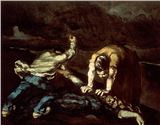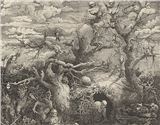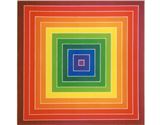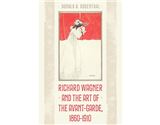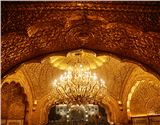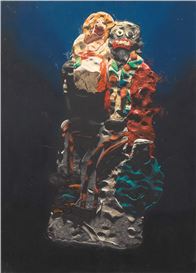In Praise of Painting, Matthew Weir
Is painting dead? Yes, if one judges by the content of recent large exhibitions in leading museums.
Karen Wright / phillips ART expert
Apr 29, 2009
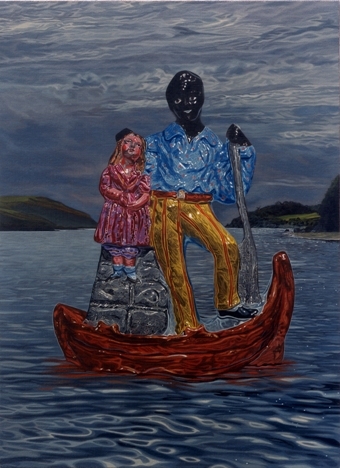
Weir, a graduate of Winchester and the Royal College of Art eschews the increasingly old fashioned-seeming technical rigor, producing canvases of eye aching detail. He works in a modest sized studio in Bow, East London, relying on audiotapes of books or music depending on his mood, to keep him company. He told me when I visited him earlier in the year that he has refused to hire assistants to help paint the intricate, often floral backgrounds of his work as the process is important to him in working out the total compositions.
Standing in front of one of the larger works, “Suicide” he explains the evolution of the contents of the cross shaped piece. The cloud, at the top of the work was a sky- scape that he observed one day from the window of his studio. He photographed it, knowing that one day he would want to use the very figurative looking cloud. The waterfall at the bottom is an image he found on the Internet while the central figures of an artist being “assisted” by some grim skeletons of death come from a book of medieval images. Weir explains that the entire composition is more of a collage than a singular painting. The shape itself he says came indirectly from a poem that he wrote.
The waterfall image appears in other works in this show. All the images come from the Internet, he explains, but none of them are photo shop or mechanically reproduced- it is all slow-easel and paintbrush.
Weir met painter Glenn Brown while at the Royal College and was included in an earlier group show that Brown curated. While there are obvious similarities in their meticulous while effortless appearing technique and their source material may often be similar, Weir’s work differs in intent to Brown. Weir reminds me in some ways more of Portuguese artist Paula Rego than Brown with the works setting up a narrative with the viewer.
There is a metaphysical quality about Weir’s work. Is the small “very pink” girl in "The Lake," a work based on a Staffordshire ceramic piece depicting “Uncle Toms Cabin, an innocent Eva is being ferried around by her tall very black companion. Innocence and knowing. Child and Adult. Large and Small. These are some of the opposites that Weir sets up in this seemingly simplistic work. While their sources often may be the stuff of the masses, cheap souvenir china works, Weir is teasing out a meaning beyond their original use.
Recently Weir began making sculptures, which stand here by the painted works. An earlier piece, “In Love” from 2007-8 based on an Egyptian figurine is almost unbearable to look at, the totemic fertility symbol attacked by wooden stakes driven deep into the heart of the sculpture. Weir explains to me that he saw the work from the Louvre in a book and was drawn to it. He shows me a photograph of the original, which is a more overtly almost voodoo image, the sculpture penetrated by sharp looking metal pins. Weir has upped the ante with his work. Increasing the sexuality by exaggerating the breasts and using large wooden stakes through the eyes, mouth and vagina. Weir says it is to stop someone falling in love and points to its genesis as being not only the figurine but also the work of the Belgian Surrealist Renee Magritte, one of his favorite artists. He says he made a model first in blue tack and matchsticks before scaling it up and redoing the work.
In “Shrine” 2008 Weir takes as his inspiration another Staffordshire Pottery piece, this time Little Red Riding Hood. He admits to a fascination with the story and it’s various, often violent, iterations. Here, Little Red Riding Hood stands, her face almost featureless, reduced to a simplistic ageless mask. Next to her a rather emasculated wolf, that looks more like a dog than a ferocious animal. The red of her shawl is repeated in the inside of what would have been the opening to a vase and on the stalk of the vase draws the entire composition together and is another instance of the ramping up –the transformative quality that Weir brings to his depictions.
I ask Weir what he is working on now? And his response is an image of a man astride an alligator and smiles quietly. He is anxious to get back to the studio and back to work. Putting on the show has been disturbing to his rhythm of making work and one feels that this is not his favorite part of his practice.


